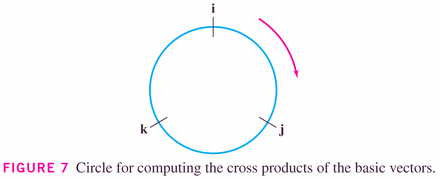- I made a change in how I curve the last test: I'll give you 20% of the difference between your score and a hundred (to motivate those who did well to come in, perhaps!;). It gives everyone a little boost, too.
- According to the exam schedule, you all should be free from 1:00-3:00 on Tuesday, 12/16. I'll plan to hold a review session then (which will include a chance for you to ask problems about any of the topics we've covered.
- I also plan to hold a review session Thursday, 12/18, in the evening. Let's say 7:00-9:00 (or until everyone is gone!;)
- HW12.4 Returned:
- #18: limits of integration: 0, 3 (where does the radius equal zero?)
- #24: limits of integration: 0,
(if you to
, you'll make two trips around the circle!)
- Reminder: Homework problems:
- pp. 665-, #22, 30, 38, 59, 60 due today.
- pp. 673-674, #13, 18, 22, 26, 45, 50, 51 (due Thursday, 12/11).
- pp. 680-683, #2, 7, 8, 14, 16, 41, 42, 60, 70, 71 (due Friday, 12/12).
- A problem or two from 13.4/13.5 will appear on the final.
- Something fun(ction):
- Google Trends!
- What features do we focus on?
- These are the functions you will find yourselves working on....
- We considered parametric equations of lines last time, again starting from uniform circular motion. As we saw in that case,
and
But that
and that
.
If we "cut the string" holding the particle (or planet!) in uniform circular motion, then the equation of the line along which it would move to be the following:

Examples:
- #46, p. 674 (another way to tell that they're the same line)
- #52, p. 674 (in what plane do these two lines lie?)
- Section 13.4: The Cross Product
- The next product we'll find convenient to define is the cross
product, which is a product of two vectors resulting in a third vector,
which juts into the space perpendicular to which the two vectors live. It is
only useful in three-space, which makes it somewhat unusual (the dot product
exists and is useful in any-dimensional space).
Because the cross product is linear in the components, we can define it on the unit vectors in three space, and then deduce it using the component-wise definition of a three-vector.





Don't worry about the determinant stuff in these sections: we'll leave that to linear algebra! It's an interesting little side-trip at this point, but becomes fundamental in LA.
Examples:
- #20, p. 691
- #28, p. 691
- The force
on a proton moving at velocity
(in m/s) in a uniform magnetic field
(in teslas) is
(in Newtons), where
Coulombs:

- Time for a little calculus, differential equations, and linear algebra:
- Let's see if we can deduce the trajectory of the proton in this illustration.
- #36, p. 692
- A great explanation of torque: #64, p. 693
Links:
- The next product we'll find convenient to define is the cross
product, which is a product of two vectors resulting in a third vector,
which juts into the space perpendicular to which the two vectors live. It is
only useful in three-space, which makes it somewhat unusual (the dot product
exists and is useful in any-dimensional space).